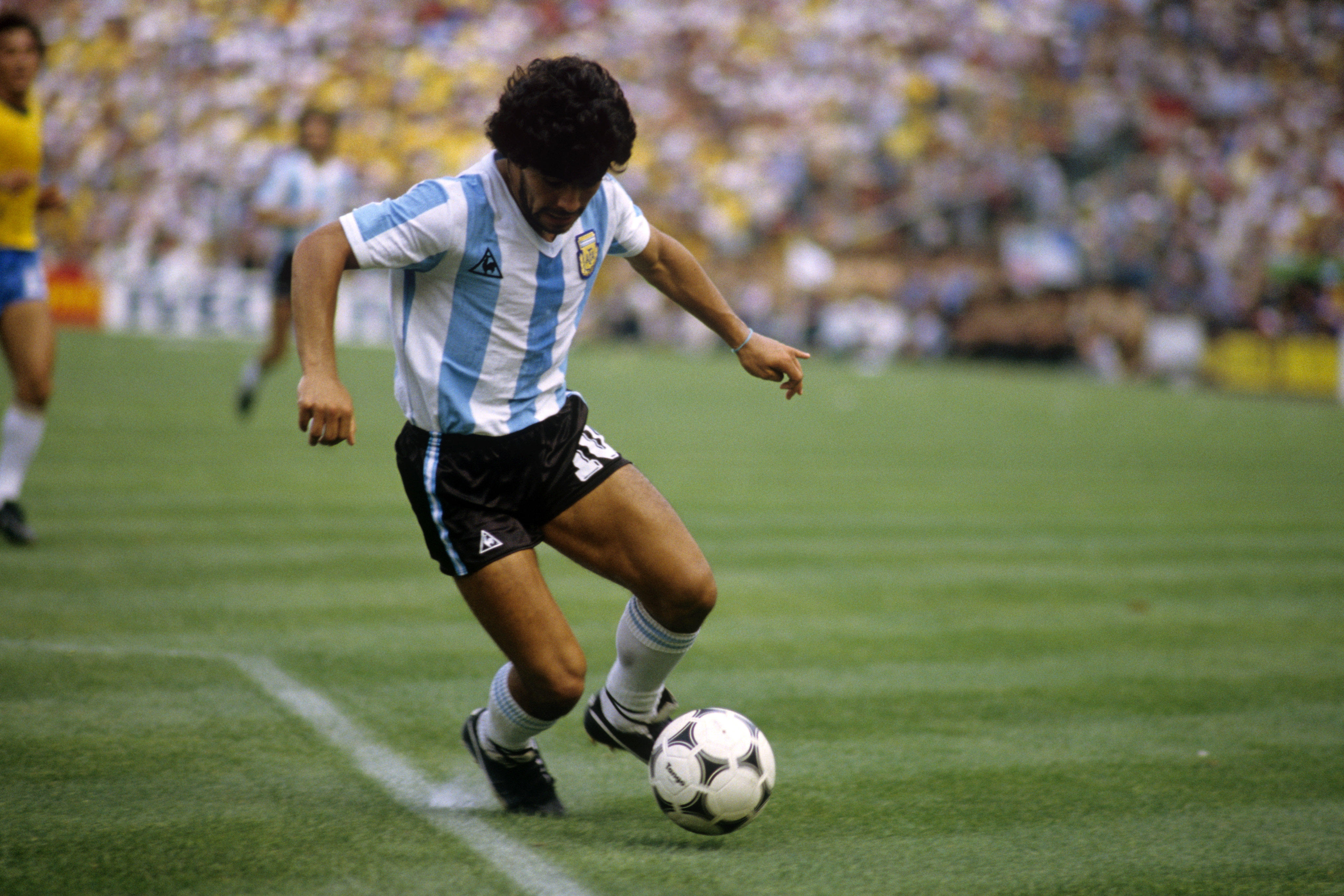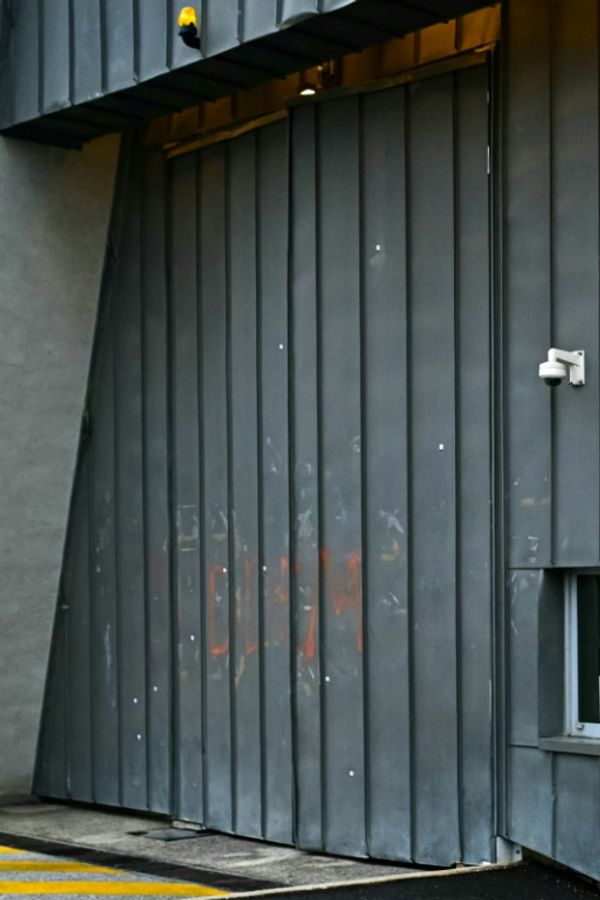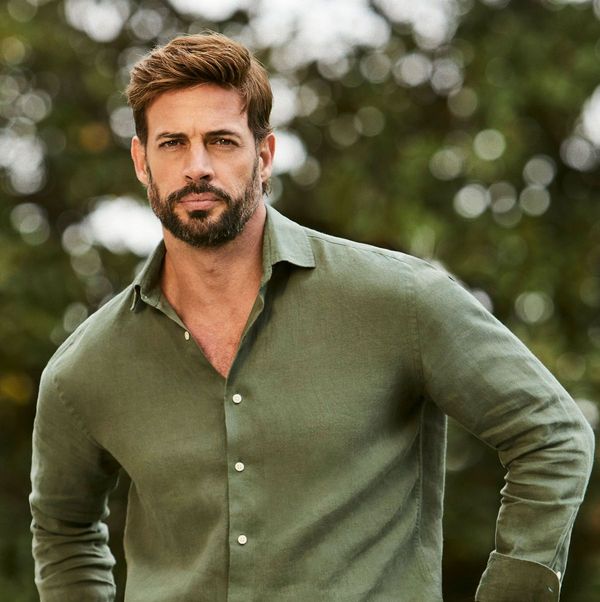
The left-footed player: one of the most precious commodities in all of football.
Wingers, full-backs, midfielders, centre-backs, strikers and goalkeepers all get a look-in as we count down the game's greatest purveyors of the only foot that's allowed to be described as a wand.
Give any of the arrows on the right (not the left – annoying, we know) to get started!
Up there with the world’s very best strikers in his prime, the devastatingly complete Adriano could be as good as unstoppable.
And the 48-cap, 27-goal Brazil international’s most unstoppable aspect of all was his ferocious left-footed shot, which he often unleashed from range during his goal-laden spells with Parma and Inter.
One of the highest-scoring centre-backs in the history of the game, Daniel Passarella found the net more than 150 times for club and country.
A World Cup winner with Argentina in 1978 and 1986 – captaining his country at the former as they lifted the trophy for the first time – Passarella starred most notably at club level for River Plate and Fiorentina.
Real Madrid and Spain skipper for many years, Fernando Hierro was a highly versatile defender who could also be deployed to great effect in midfield.
An expert penalty-taker, Hierro scored 163 career goals – including 29 for his nation – and won the Champions League three times with Real, the last of those in 2001/02 as captain.
A seriously classy playmaker with fantastic dribbling and crossing ability, Uruguayan legend Alvaro Recoba spent the best years of his career with Inter – where he won two Serie A titles.
Capped 68 times by his country, appearing at the 2002 World Cup, Recoba was the highest-paid player in the world for a short period at the start of the century.
Recoba’s Inter teammate and fellow South American midfield maestro, Argentine Esteban Cambiasso’s well-rounded skillset made him a huge asset to club and country.
A world-class operator in a variety of roles across the middle of the park, Cambiasso scored one of the finest goals in World Cup history, finishing off a mesmerising 24-pass move as Argentina thrashed Serbia and Montenegro 6-0 in 2006.
An FA Cup winner with Arsenal and a two-time Serie A champion with Juventus, Liam Brady undoubtedly goes down as one of the very best Irish players of all time.
An eminently graceful attacking midfielder, he was voted 1978/79 PFA Players’ Player of the Year and named as the Gunners’ Player of the Season on three occasions.
Holder of the record for the most Premier League clean sheets – recording 202 shutouts across his spells with Chelsea and Arsenal – Petr Cech is undoubtedly one of the all-time goalkeeping greats.
Adept with either foot, the giant Czech Republic international – who helped the Blues to four league titles – was naturally left-footed, and he proved to be an adept sweeper-keeper as the game evolved towards the end of his career.
Among the greatest left-backs of all time, Jordi Alba won it all with Barcelona, combining to stunning effect with Lionel Messi and playing an integral part in the Catalan giants’ treble triumph of 2014/15.
Spain’s go-to left-back throughout the 2010s, Alba helped his nation to victory at Euro 2012 and earned 93 caps overall.
A standout midfielder of the 90s and 00s, Dutch icon Edgar Davids was combative and technically gifted in equal measure, regularly winning the ball back then picking out a pinpoint pass with his left foot.
Capped 74 times by the Oranje, starring at three Euros and the 1998 World Cup, the distinctively dreadlocked and goggled Davids was a key component of Ajax’s famous 1994/95 Champions League-winning side.
A talented athlete in his youth, Hans-Peter Briegel could have been a long-jumper or triple-jumper – but he opted for football, much to West Germany’s delight.
Combining fantastic physicality and technicality, Briegel – who spent the first nine years of his career with Kaiserslautern, before joining Verona and winning the 1984/85 Serie A title (and German Footballer of the Year) – made UEFA’s Team of the Tournament en route to victory at Euro 1980, and helped his nation to the 1982 and 1986 World Cup finals.
Arguably the best left-back in the game at his peak, Patrice Evra starred in five Premier League title victories at Manchester United between the 2006/07 and 2012/13 seasons – as well as winning the 2007/08 Champions League.
An exceptionally well-rounded operator, Evra earned 81 caps for France and captained them at the 2010 World Cup (only to lose the armband as Les Bleus players mutinied against manager Raymond Domenech).
Playmaker supreme, Mesut Ozil was up there with the very best midfielders on the planet during the 2010s, starring for Real Madrid, Arsenal and Germany.
Integral to his country’s 2014 World Cup success, Ozil was elite in a central role or on either flank, leading the Premier League for assists in 2015/16 and winning German Player of the Year on five occasions.
For more than a decade, Raul spearheaded the Real Madrid attack, amassing 323 goals to become one of the club’s all-time leading marksmen.
Throw in the goals he scored for his other clubs – Schalke, Al Sadd and the New York Cosmos – and Spain, and Raul made the net ripple the bust part of 400 times during a career which yielded six LaLiga titles and three Champions League crowns.
England’s greatest ever full-back, Ashley Cole enjoyed immense success with Arsenal and Chelsea, tasting Premier League and FA Cup glory with both clubs – and winning the Champions League with the latter.
A world-class attack-minded defender, Cole linked up superbly with Robert Pires and Thierry Henry in Arsene Wenger’s legendary ‘Invincibles’ Gunners side who won the 2003/04 title without losing a game.
Robin van Persie racked up more than 300 goals for club and country, cementing himself as one of the standout strikers of the 21st century.
The deadly Dutchman started out as a left winger, before putting his strong foot to maximum use as a centre-forward, peaking in the early 2010s as he claimed back-to-back Premier League Golden Boots – scoring 30 goals for Arsenal in 2011/12 and 26 for Manchester United the following campaign.
A world-class playmaker and one of the standout attacking stars of the 21st century, Angel Di Maria has turned many an opponent inside out with his left foot-led genius – and rendered many more helpless with his elite passing ability.
Among Argentina’s most-capped players, Di Maria was crucial to his country’s 2022 World Cup triumph – scoring in the final against France – having previously won the 2013/14 Champions League with Real Madrid.
Romania’s greatest ever player, Gheorghe Hagi was up there with the best in the world towards the end of the 20th century, earning the nickname ‘The Maradona of the Carpathians’ for his show-running brilliance (and his left-footedness, presumably).
The archetypal number 10, Hagi captained his nation to within a penalty shootout of the 1994 World Cup semi-finals and banged in more than 300 career goals, reaching the 1989 European Cup final with Steaua Bucharest, winning the 1999/2000 UEFA Cup with Galatasaray – and turning out for both Real Madrid and Barcelona in between.
A supremely talented left-sided defender, Italian great Giacinto Facchetti was one of the first truly attacking full-backs, starring prominently in Helenio Herrera’s dominant ‘Grande Inter’ team of the 60s – helping them to back-to-back European Cups and Intercontinental Cups in the middle of that decade.
Runner-up to Eusebio for the 1965 Ballon d’Or, Facchetti famously captained Italy to 1968 European Championship glory and the final of the 1970 World Cup.
To play in Spain’s all-conquering teams who won the 2010 World Cup and successive Euros either side of that ultimate victory, you had to be pretty good with your feet.
Skipper Iker Casillas certainly was, ensuring his legacy as one of the finest goalkeepers in the history of the game by serving as La Roja’s elite last line of defence in all three of those tika-taka triumphs. He also won just the three Champions League crowns with Real Madrid, where he also wore the captain’s armband.
Purveyor of perhaps the most magnificent moustache in football history, Rivellino’s facial hair was almost as good as his ability on the pitch.
A major star of Brazil’s 1970 World Cup victory, scoring three goals at the tournament, the scintillating winger fine-tuned what came to be known as the ‘flip-flap’ – the feint-like move more recently favoured by the likes of Ronaldo, Ronaldinho and Neymar.
Adored by Manchester City fans for his starring role in the club’s early Premier League title wins, and one of the most mesmerising players to watch for football fans in general, David Silva’s world-class playmaking abilities place him among the best ever to perform the role.
An enormous creative threat wherever he was deployed, Silva – who provided 93 Prem assists in all – was also heavily involved in Spain’s World Cup victory and successive Euros triumphs.
Vital to West Germany’s Euro 1972 and 1974 World Cup successes, scoring in the final of the latter against the Netherlands, Paul Breitner was one of the finest players of his generation.
World-class at left-back or on midfield, he lifted the 1973/74 European Cup with Bayern Munich and finished second to compatriot Karl-Heinz Rummenigge in the voting for the 1981 Ballon d’Or.
Arguably the greatest African player of all time, prime Mo Salah was on a par with almost any other player in world football, scoring freely for Jurgen Klopp’s Liverpool and creating plenty more goals in winning every major trophy available.
A similarly prolific marksman for Egypt, Salah – who’s most at home as an inverted right-winger but has proved amply threatening through the middle – did a prestigious treble of Golden Boot, PFA Players’ Player of the Year and FWA Footballer of the Year in 2017/18 – his first season at Anfield.
The greatest Bulgarian player of all time, Hristo Stoichkov scooped the 1994 Ballon d’Or after spearheading his nation’s charge to the 1994 World Cup semi-finals.
A 1991/92 Champions League winner with Johan Cruyff’s Barcelona ‘Dream Team’, Stoichkov was an explosive striker who claimed the European Golden Shoe after smashing in 38 goals in 30 league games for CSKA Sofia during the 1989/90 campaign.
The most decorated player in Premier League history – winning a whopping 13 titles with Manchester United – Ryan Giggs also belongs to a select group of footballers to make 1,000 career appearances or more.
Both achievements are testament to the left-wing wizardry of the Welshman so talented he once made Alessandro Del Piero cry (yes, really).
Up there with the Netherlands’ very best of all time, Arjen Robben terrorised many a left-back by cutting in from the right onto his veritable wand of a left peg.
A sublime dribbler blessed with incredible pace, Robben regularly ran the show down that flank, starring in Chelsea’s first two Premier League title wins and going on to ensure true greatness at Bayern Munich – where he scored 144 goals in 309 and did the treble in 2012/13, bagging an 89th-minute winner against Borussia Dortmund in the Champions League final.
Wales’ greatest ever player? Probably – and Gareth Bale was one of the best players on the planet during the 2010s, when he tore up the Premier League at Tottenham and earned a then world-record £85.1m move to Real Madrid, where he picked up where he had left off in England.
Converted from left-back to left winger by Harry Redknapp at Spurs, the unstoppably explosive Bale won the Champions League five times with Real and captained his country to the semi-finals of Euro 2016.
A key component of successful Milan teams under Arrigo Sacchi, Fabio Capello and Carlo Ancelotti, Alessandro Costacurta reached levels most centre-halves could only dream of.
The sole left-footed member of the iconic Rossoneri back four comprising Mauro Tassotti, Franco Baresi, Paolo Maldini (famously a right-footed left-back, of course) and himself, Costacurta was a five-time champion of Europe and earned 59 caps for Italy – with whom he reached the 1994 World Cup final.
The greatest left-footed left-back ever to play the game (we’ll reserve overall top spot for Signore Maldini), Roberto Carlos’ left peg belongs in a museum (figuratively speaking – obviously that would be highly unethical).
With it, the Real Madrid and Brazil icon – a Champions League and World Cup winner – scored some of the most outrageous goals ever seen – none more indelibly memorable than that 40-yard free-kick for his country against France at 1997’s Le Tournoi.
Talisman of Hungary’s ‘Magical Magyars’ team of the 50s – arguably the greatest side not to win the World Cup – Ferenc Puskas was nothing short of sensational.
Football’s first international superstar, he amassed an absurdly prolific 806 goals in 793 official matches – including 84 in 85 for his nation, for whom he opened the scoring in the 1954 World Cup final loss to West Germany – and helped Real Madrid to three European Cups, notching four goals as Los Blancos eviscerated Eintracht Frankfurt 7-3 in the 1960 final.
Either the second- or third-best player of all time (we’ll let you argue that one out amongst yourselves), Diego Maradona might as well not have had a right foot.
Rarely, if ever, has anyone run rings around (or just run straight through) the opposition to such a devastating extent as Argentina’s 1986 World Cup-winning captain while relying so heavily on one foot (as exemplified in jaw-dropping fashion by his ‘Goal of the Century’ against England at that tournament). He wasn’t too bad with his left hand, either.
This wasn’t exactly a hard conclusion to come to. Lionel Messi is the GOAT, and he just happens to be left-footed. Whatever is the next step up from a wand in the world of magic (any Harry Potter fans care to help us out?), that’s what Messi’s left foot is.
Unless you want to be facetious, there’s nothing the record eight-time Ballon d’Or-winning Barcelona icon has failed to achieve in the game, but his inimitably influential captain’s performance to guide Argentina to 2022 World Cup glory stands above all the rest.







